The Art and Meaning of Spiritual and Cultural Paintings
Spiritual and cultural vintage paintings are visual tapestries woven from memory, belief, and tradition. These are not mere decorative artifacts; they are narrative vessels carrying ancestral values, ritualistic practices, and metaphysical inquiry. Whether they emerge from temple murals, tribal scrolls, or folk depictions, these paintings are acts of devotion, protest, identity, or celebration. The pigment becomes prayer; the brushstroke becomes rhythm. With aged textures and symbolic imagery, they transport the viewer into a sanctum of time, where every motif tells a story of community, cosmos, and contemplation—often echoing voices that were never written, only painted.
What Is A Spiritual Or Cultural Vintage Painting?
A spiritual or cultural vintage painting is a visual representation rooted in devotional sentiment or ethnic tradition, preserved over time with both artistic and historical value. These paintings are not bound by religious doctrine alone; they often reflect sacred geographies, mythologies, or oral histories particular to a region or belief system. Cultural identity is embedded through stylized depictions—be it in the narrative precision of Pattachitra, the symbolic geometry of Tibetan Thangkas, or the rustic immediacy of Madhubani. Such works often blend theology, folklore, and indigenous technique, radiating meanings layered in belief, ritual, and ancestral knowledge. Aged through natural wear or organic mediums, their aesthetic is textured, imperfect, but deeply resonant.
What Makes A Painting ‘Spiritual Vintage’ Instead Of Just Old?
A painting becomes ‘spiritual vintage’ not just by aging but by anchoring itself in metaphysical or cultural consciousness. It holds ritualistic essence, symbolic gravitas, and often a regional imprint—telling stories that transcend time. Unlike a painting that is simply old or antique, a spiritual vintage work echoes devotion or community tradition. It may depict divine figures, spiritual journeys, or sacred topographies. The passage of time adds patina, but it’s the spiritual function—offering, mourning, healing, or blessing—that elevates it. Organic pigments, hand-woven canvas, or traditional mineral dyes also lend authenticity, making each crack or fade part of its sacred narrative.
What Emotions Or Themes Do Spiritual And Cultural Vintage Paintings Commonly Portray?
Spiritual and cultural vintage paintings are drenched in emotive symbolism—devotion, transcendence, longing, reverence, collective memory, or divine ecstasy. These are not neutral images; they evoke sanctity, awe, and introspection. You often find a harmonious symmetry representing universal balance, lotus motifs denoting awakening, or halos indicating divinity. Scenes from epics and parables reveal not just events but emotions like sacrifice, grace, suffering, or surrender. Tribal works may carry motifs of fertility, community, or seasonal joy. Every curve or stroke becomes a stylized expression of belonging—sometimes serene, sometimes chaotic—but always intentional, always spiritually anchored in the pulse of human experience.
What Are The Most Recognized Styles In Spiritual And Cultural Vintage Painting?
Several renowned styles mark the terrain of spiritual and cultural vintage painting. The intricate storytelling of Kalamkari, the visual hymns of Tanjore, or the mandalic precision of Thangka represent sacred geometries. Pattachitra and Madhubani weave folklore through repetitive motifs and natural colors. Rajasthani miniatures present divine love and courtly rituals with jeweled finesse. Tribal traditions like Warli and Gond abstract everyday divinity through minimalist forms or vibrant patterning. In the global context, Byzantine icons, Christian frescoes, or Zen ink paintings carry parallel spiritual densities. Each style is not only a visual language but also a philosophical imprint, bearing ritual, myth, and memory.
Why Are Spiritual And Cultural Paintings Still Revered In The Contemporary Art World?
In a hyper-digital, fragmented world, spiritual and cultural paintings serve as grounding rituals. They are revered not just for aesthetic nostalgia but for their timeless invocation of deeper truths. Contemporary artists and collectors recognize these works as visual scriptures—repositories of indigenous wisdom, ethical balance, and human vulnerability. They offer resistance to cultural erasure, celebrating identity through pigment and pattern. Galleries frame them as both artifacts and oracles—where historical presence meets metaphysical resonance. Their compositions continue to inspire modern palettes and postmodern philosophy, making them a bridge between lost traditions and renewed spiritual curiosity. Reverence here is both emotional and intellectual.
Techniques, Mediums & Artistic Tools in Spiritual and Cultural Paintings
Spiritual and cultural paintings are not merely artistic expressions — they are visual chants, crafted with meditative precision and symbolic depth. Every medium, every brushstroke, carries a coded language that transcends time. Whether it’s the delicate rhythm of miniature art or the earthy texture of tribal paintings, the essence lies in the tactile and transcendental conversation between pigment and purpose. These paintings are not born from the ego of creation but from surrender — to tradition, to ritual, to divinity. Their tools are extensions of inherited memory, and their techniques are the visual scriptures of cultures passed down by hands that believed art to be holy. The choices — of material, palette, and method — are not arbitrary but intentional, layered with meanings. They echo chants, rituals, festivals, and philosophies — drawing from not just technique, but from spiritual stillness and cultural consciousness.
How Were Spiritual And Cultural Paintings Traditionally Created?
Traditionally, spiritual and cultural paintings were created through processes that were as ritualistic as they were artistic. Artists didn’t just paint; they prepared — mentally, spiritually, and materially. In Indian traditions, for instance, a painter would sometimes fast, pray, or chant before initiating work on a sacred image. Materials were handcrafted — natural dyes from turmeric, indigo, or vermilion were ground with stone; brushes were made from animal hair or date-palm fibres. The process respected time — allowing pigments to dry naturally, layering textures with patience. In Buddhist thangkas, outlines were first inked in silence, colours added methodically, and gold leaf applied only during auspicious timings. These works were often communal, with one artisan preparing the base while another detailed the narrative figures. It wasn’t just about creating an image, but about invoking a presence — of gods, ancestors, or universal energies — with every stroke serving both aesthetic and spiritual function.
What Painting Mediums Were Commonly Used In Spiritual And Cultural Art?
In spiritual and cultural painting traditions, mediums were chosen with reverence, not convenience. Natural pigments derived from minerals, soil, plants, and even insects formed the basis of colour. In India, red ochre, lampblack, malachite green, and indigo were common. Gold leaf and real silver were reserved for sacred elements — halos, crowns, cosmic auras. Water-based mediums like tempera were prevalent in Pattachitra, Ajanta murals, and Jain manuscript paintings, where gum arabic or cow’s milk acted as binders. In Persian and Mughal miniatures, meticulous application of gouache and natural inks was practiced. Japanese scrolls used ink and watercolour on silk or paper, while African spiritual motifs used clay-based paints on walls. These mediums weren’t passive; they interacted with the surface — absorbing, blending, or standing bold depending on the story they told. The choice of medium reflected the regional resources, spiritual context, and desired longevity of the artwork.
What Role Did Canvas, Wood, Or Fabric Play In Spiritual And Cultural Paintings?
The base of a spiritual or cultural painting is never just a surface — it’s a vessel. Canvas, wood, stone, silk, or fabric were chosen with symbolic and practical intent. In India’s Kalamkari art, handwoven cotton was soaked in cow’s milk and myrobalan to purify it before dyeing. Buddhist thangkas were created on tightly stretched cotton or silk mounted with brocade — allowing the artwork to be rolled and preserved in monasteries. Medieval Christian icons were painted on wood panels treated with gesso, making the surface luminous for devotional gazing. Warli art, in contrast, was born on freshly plastered mud walls — a dialogue between earth and spirit. The material influenced texture, durability, and the way pigments held their brilliance. More than mere technique, the chosen base was a spiritual conductor — grounding divine motifs into tactile presence, preserving ancestral dialogues in physical form.
How Do Brushstrokes And Texture Affect The Feel Of Spiritual And Cultural Paintings?
Brushstrokes in spiritual and cultural paintings are like breath in meditation — measured, meaningful, never wasted. In Indian miniature paintings, the strokes are minute, often executed with squirrel-hair brushes to capture micro-details: eyelashes, embroidery, divine expressions. In Madhubani, bold outlines made from twigs or matchsticks elevate motifs into ritual icons. In East Asian traditions, brush movement is connected to qi — the life force — with strokes embodying the artist’s inner balance. Texture, too, is intentional. Raised gold on Persian miniatures signifies sacred radiance; layered mud in Gond or Bhil art mimics the undulating earth. In Aboriginal dot paintings, repetitive texture becomes a meditative trance. Texture is not a byproduct — it’s the painting’s voice, echoing spiritual rhythm, tactile storytelling, and cultural codes. Together, brushstroke and texture move the viewer’s eye and soul — inviting contemplation, not just admiration.
What Should One Look For In The Technique To Identify A Spiritual Or Cultural Period-Specific Work?
Identifying a period-specific spiritual or cultural work requires more than visual recognition — it demands cultural listening. Each era has a signature — in its line quality, motif placement, pigment palette, and even imperfections. The angular elegance of Jain palm-leaf manuscripts differs from the lyrical curves of Rajput paintings. The flat planes of folk art contrast with the depth created through Mughal shading techniques. Look at halos — are they geometric or floral? Observe borders — are they thick with narrative vignettes or minimal with sacred geometry? The kind of gold used, the architectural backdrops, or the way a deity’s eyes are drawn — all are time stamps. Technique also reflects socio-political undercurrents — Persian influence in Mughal art, Tantric symbolism in Pahari miniatures. Brushwork clarity, material degradation, and script annotations help trace not just the time, but the temperament of that time — revealing if the piece was devotional, ceremonial, or transitional in purpose.
Artistic Intent and Symbolism in Spiritual and Cultural Paintings
Spiritual and cultural paintings are more than visual expressions—they are intimate conversations between the seen and the unseen, often encoded with generational memory and layered beliefs. These artworks are deliberate compositions, not simply to beautify but to mean. The brush is guided by philosophy, not impulse. Every curve, texture, and hue is a passage into the painter’s metaphysical or cultural realm. Symbolism weaves through motifs—lotuses, third eyes, halos, or mythological beings—not as decoration, but as mnemonic echoes of rituals, scriptures, or ancestral teachings. The artist becomes a translator of spiritual truths, using canvas as a spiritual document. These works whisper, meditate, and often linger in silence longer than speech ever could.
What Stories Or Messages Did Spiritual And Cultural Paintings Aim To Convey?
Spiritual and cultural paintings historically functioned as visual scriptures—conveying stories from epics, mythology, folklore, and philosophical texts. These were not passive illustrations; they were active agents of belief, knowledge, and identity. For instance, Indian Pattachitra or Tanjore paintings weren’t merely art—they were meditative acts, often depicting the Ramayana or tales of Krishna, created with ritualistic precision. Tibetan Thangka paintings weren’t décor; they were spiritual maps guiding inner transformation. Through these, artists communicated divine intervention, moral lessons, human dilemmas, and metaphysical realities. These stories offered a shared visual language that communities could relate to—transforming walls into sacred narrations. Symbolic coding—like chakra wheels, mudras, divine animals, or cosmic diagrams—deepened the message. Each painting often layered time, myth, ritual, and philosophy in ways that transcended oral tradition and entered visual eternity.
How Did Artists Express Spiritual Or Cultural Symbols Through Vintage Art?
Artists rooted in spiritual or cultural traditions didn’t merely paint; they channeled. Symbolism was not ornamental, but intentional. The use of sacred geometry, floral metaphors like lotuses, mythological animals, and deity iconography shaped the visual grammar of vintage spiritual art. For example, halos behind saints weren’t just light—they represented cosmic awareness. Hands held in mudras communicated emotion, invocation, or healing. Cultural motifs like kalash (water pots), conch shells, or fire altars hinted at ritualistic life. In miniature paintings, artists used posture, gaze, and clothing to signify caste, tradition, or spiritual depth. Moreover, repetition of patterns was not just aesthetic—it echoed the rhythmic repetition of chants and mantras. Natural pigments derived from earth, turmeric, or indigo not only grounded the work in local materiality but deepened its sacred resonance. These symbols were layered, not explained—meant to be felt, not just seen.
How Do Light, Shadow, And Color Palettes Influence The Mood Of Spiritual And Cultural Paintings?
Light, shadow, and color are the tonal instruments of emotional architecture in spiritual and cultural paintings. Warm ochres, saffrons, and deep indigos often evoke divinity, introspection, and ancestral rootedness. Artists used chiaroscuro-like effects subtly—light symbolizing spiritual awakening or divine presence, and shadows suggesting mystery, transcendence, or the unknown. In many Indian murals or Persian miniatures, golden tones radiated celestial energy, while cooler palettes represented meditative or monastic life. Even absence of color—use of neutral tones or monochrome—evoked stillness, silence, or sacred minimalism. Strategic color placement wasn't random; it directed emotional flow and psychological depth. Light falling upon a deity’s face or aura could indicate enlightenment, while shadows cast on the periphery might represent worldly distractions or ignorance. Together, these visual techniques built a meditative rhythm, guiding the viewer’s inner journey—subtly but powerfully altering the space between the sacred and the spectator.
Collection & Investment in Spiritual and Cultural Paintings
Spiritual and cultural paintings aren’t just brushstrokes and pigments; they are fragments of collective memory, moments of devotion, and inherited legacies. The art of collecting such pieces goes beyond financial return—it is an act of preservation, an emotional retrieval of our timeless consciousness. From sacred mythological depictions to tribal symbology and temple mural inspirations, every canvas breathes a forgotten dialogue. These paintings grow in emotional capital as they travel across time. Owning one is like holding a script from the past—subtle yet heavy, vibrant yet meditative. Their worth lies as much in soul resonance as in market value.
Where Can You Buy Authentic Or Reproduction Spiritual And Cultural Vintage Paintings?
Authentic or reproduction spiritual and cultural paintings are available through various channels, but selection should be both intuitive and informed. Art galleries, heritage exhibitions, and state-run emporiums often carry curated collections, with regional specificity—from Madhubani in Bihar to Pattachitra in Odisha. For digital buyers, platforms like IndianShelf, Saffronart, ArtZolo, and even vetted Etsy stores host both original and reproduction works. Auctions (both online and physical) can offer rare finds. However, regional artisans and independent spiritual art collectives still remain the most intimate source, offering works not yet digitized or globally exposed. It's important to engage with communities that carry lived experience of the artform—they infuse every brushstroke with cultural memory. Choose places where provenance is recorded, the narrative is explained, and the artist is celebrated—not just displayed. That’s where authenticity breathes, not merely hangs.
How Can You Verify The Authenticity Of A Spiritual Or Cultural Vintage Painting?
Authenticity in spiritual or cultural vintage art rests not only in documentation but in material memory. Begin by observing the canvas texture, color oxidation, wear around the edges, and traditional pigments (such as natural dyes or mineral-based paints). Certificates of authenticity issued by recognized bodies or curators help but aren’t always conclusive. Look deeper: the artist’s signature, any seal of ownership, and cultural context alignment—does the attire, symbol, or deity depicted correspond to the era or region it claims? Provenance plays a key role—track ownership, exhibitions, or sales history if possible. Consulting a cultural historian or an art appraiser with specialization in Indian traditional or devotional arts can ground your purchase in truth. In some cases, even the frame or mounting method may provide hints about its timeline. Authenticity isn’t only factual—it’s felt in textures, tones, and truthfulness of intent.
What Makes A Spiritual Or Cultural Vintage Painting A Worthwhile Investment?
Investment in spiritual and cultural vintage paintings is multidimensional. Beyond their growing market valuation, their worth is tied to cultural scarcity and symbolic weight. Paintings rooted in dying traditions—be it Mithila art, Thangka, Kalighat, or Pichwai—become increasingly rare as practitioners dwindle. Thematically, spiritual art speaks to timeless human quests: devotion, transcendence, identity, mythology. This makes them perennial in demand among collectors with an eye for stories that outlive trends. Condition, provenance, artist legacy, and style uniqueness also influence value. Paintings with intact natural pigments or early works of renowned spiritual artists fetch higher returns. As spiritual consciousness rises globally, especially in meditative or holistic wellness communities, demand for such artworks is slowly migrating from niche to mainstream. Ultimately, the most worthwhile investment is in acquiring a canvas that moves you—one that holds space in your life and soul, not just on your wall.
Care, Framing & Preservation of Spiritual and Cultural Paintings
Spiritual and cultural paintings aren’t just visuals on canvas — they are breathings of faith, folklore, and memory. These works demand a sensitive approach — both as sacred keepsakes and cultural heirlooms. Preservation begins with placement — avoid harsh lights, high humidity, or crowded walls. Dusting must be feather-light, preferably with microfiber cloth. Frames should speak the same language as the artwork — vintage wooden edges for temple art, brass-cornered for Mughal miniatures. Restoration, if needed, must follow a meditative pace, not a rushed commercial fix. These pieces aren’t just hung — they are worshipped, remembered, inherited.
How Do You Properly Store And Maintain A Spiritual And Cultural Painting?
Proper care starts with recognizing the emotional architecture of a spiritual and cultural painting. Store them in temperature-controlled rooms between 18–21°C, avoiding direct exposure to sunlight or fluorescent lights that may bleach pigment layers. Use acid-free paper or archival tissue as interleaves if stacking is unavoidable. Paintings on cloth or natural canvas, especially with vegetable dyes or gold foils, are sensitive to air pollutants and moisture. Silica gel pouches can regulate humidity when boxed. Maintenance isn’t about wiping—it’s about watching. Observe signs of cracking, flaking, or fungal spots and address them early. Never use chemical cleaners. These are not decorations; they are silent dialogues passed down through time. Spiritual and cultural paintings demand a kind of mindfulness in maintenance—one that understands reverence is the real preservative.
What Frames And Materials Best Complement The Spiritual And Cultural Aesthetic?
The frame must not just support but extend the narrative of the artwork. Spiritual paintings rooted in traditions like Pattachitra, Madhubani, or Thangka, breathe best within handcrafted wooden or brass-inlayed frames—evoking temple doors or ancestral sanctums. Teakwood frames with a dull matte finish hold well for Bhakti-themed works, while antique gold borders uplift Mughal miniatures or Persian-inspired motifs. Avoid modern metallic frames or glossy finishes—they may jar the meditative, earthen language of the painting. Use acid-free mountboards to avoid long-term discoloration. Conservation glass with UV protection maintains both the look and the life of the piece. Choose materials that echo the silence, the story, the soil of the artwork. A true frame doesn't lock an artwork—it liberates its presence.
Can Old Spiritual And Cultural Paintings Be Restored Without Losing Their Original Feel?
Yes—but only through the lens of reverence and restraint. Restoration is not redoing; it is recovering. Any attempt must begin with an understanding of the painting’s original materials—natural dyes, soot-based blacks, gold leaf, or hand-ground pigments. A conservator with cultural sensitivity can match aged textures with rice starch paste, use reversible consolidants, and mend tears with Japanese tissue paper. The essence lies in invisibility. Over-restoration erases time’s poetry; good restoration preserves it. Keep photographic documentation of the process and ensure every touch echoes the original spirit. The goal is never to make it ‘new’—but to make it eternal. Restoration, at its finest, becomes an act of cultural devotion, a spiritual practice in itself.
What Are Common Damages Spiritual And Cultural Paintings Suffer Over Time?
Time etches itself on canvas as cracks, discoloration, warping, fungal growth, and fading. In spiritual and cultural paintings, especially those made with organic materials like turmeric, charcoal, or indigo, exposure to fluctuating humidity or light leads to brittleness or pigment loss. Dust settles into the grains, while wooden backings may expand, splitting the artwork. Gold leaf may tarnish, and natural adhesives can loosen. Mishandling—folding, rolling, or touching with bare fingers—can degrade surface integrity. Cultural pieces also face symbolic degradation—when context is lost, so is meaning. Hence, damage isn't just physical; it's narrative. Preservation means resisting this erasure—of form, of color, and of the spirit breathing within.
Home Decor & Mood Styling With Spiritual and Cultural Paintings
Spiritual and cultural paintings act as meditative anchors in home decor—framing not just the wall but the mood of a room. Their hues, textures, and iconography extend beyond aesthetics, shaping the emotional temperature of a space. A muted Krishna in a classical oil technique can lend a peaceful, retreat-like calmness; while a vibrant Madhubani or Warli can introduce folkloric energy and a sense of ancestral storytelling. These works carry memory, mythology, and mindfulness, making them tools of both beautification and soulful resonance. The harmony they create is not just visual—it’s visceral, often spiritual.
How Can Spiritual And Cultural Paintings Influence A Room’s Ambience Or Tone?
Spiritual and cultural paintings influence ambience by altering how a space is emotionally perceived. A painting of Buddha in earthy tones can cast a contemplative quietness in a corner, slowing the pace of the room—ideal for study zones or meditative corners. Conversely, a Thangka or temple art form in gold and red brings ceremonial intensity, often lending a room an air of sacred grandeur. The symbolism embedded within these artworks—chakras, mandalas, divine postures—work subconsciously on viewers, creating spaces that feel intentional and emotionally textured. They don’t just fill the wall; they whisper meaning. In minimalist rooms, they can balance emptiness with depth; in maximalist rooms, they harmonize the narrative. It’s not about matching palettes, but aligning energies—where art becomes the room’s unspoken intention.
What Interior Styles Pair Well With Spiritual And Cultural Artwork?
Spiritual and cultural artworks integrate surprisingly well across a wide spectrum of design languages. In Bohemian and Eclectic interiors, they serve as core identity markers—layered among textiles, terracotta, and travel ephemera. In Minimalist spaces, a single spiritual painting in muted sepia tones or charcoal sketches adds depth without clutter. Japandi interiors—where Zen minimalism meets Nordic warmth—benefit from spiritual artworks that offer calm brushwork and spiritual symmetry. Even in Industrial spaces, spiritual art contrasts raw materials with softness and philosophical weight. The key lies in the frame, scale, and spacing. A large canvas of tribal art or temple motifs framed in raw wood becomes a statement. Neutral walls make mythic imagery pop. Rather than style-specific, these paintings are intention-specific—they adapt to silence, chaos, or contemplation depending on the interior’s voice.
How Do You Choose The Right Spiritual And Cultural Painting For A Living Room, Hallway, Or Study?
Choosing the right painting begins by asking: what emotion do you want this space to carry? A living room thrives on energy and narrative, so opt for expressive, storytelling art—Pattachitra scenes, vibrant village life, or cosmic tableaux. In a hallway—often transitional and narrow—smaller, serial artworks like block prints or Tantric mandalas maintain interest without overwhelming. For studies or reading corners, go for introspective pieces: Sufi calligraphy, a serene Nataraja, or meditative Yantras in muted tones. Lighting matters—directional lights can dramatize textures, while soft wall washers enhance serenity. Scale and proportion must be respected: a large wall demands a central commanding piece; a niche or console can be softened with framed scrolls or miniatures. It’s not about matching furniture; it’s about matching emotional rhythm. Let the art speak first—then decorate around it.
Can Spiritual And Cultural Paintings Be Used As Focal Points In Modern Decor?
Absolutely—and not just as focal points, but as soul points. In modern decor, where clean lines, neutral palettes, and statement pieces dominate, a spiritual or cultural painting becomes a visual and emotional nucleus. A vivid Kalamkari behind a sleek beige sofa isn’t a contrast—it’s a cultural punctuation. A large-format contemporary Ganesha in acrylics can replace generic abstracts and lend originality. In ultra-modern spaces, even one piece—like a stylized Bodhisattva rendered in monochrome—can reset the mood without clashing. Modern interiors often seek grounding, and these artworks anchor identity, depth, and warmth. Float-mounted framing, glassless canvases, or raw-edge installations elevate them from decorative to narrative. Their role? Not just to be seen, but to be felt—silently pulling focus, adding dignity to walls that often scream for substance.
What Are Some Creative DIY Display Ideas For Spiritual And Cultural Art?
Think beyond frames. Use raw jute ropes to suspend canvas scrolls for a rustic, temple-art feel. Mount mini spiritual prints inside shadow boxes layered with sacred threads, bells, or incense tins for sensory memory. Display smaller artworks on floating wooden shelves alongside vintage oil lamps, stones, or brass diyas—curating micro-altars of cultural nostalgia. Try an oversized unframed canvas draped over a wooden dowel like a tapestry—especially effective for tribal or folk art. Combine three small pieces in different styles but similar tones and create a mini-gallery corner. You can even backlight translucent artworks like silk paintings or handmade paper art to simulate temple-glow. These aren’t just creative—they’re reverent. Your wall becomes a prayer. Your space becomes a storyteller.
Cultural Impact & Historical Legacy of Spiritual and Cultural Paintings
Spiritual and cultural paintings are more than images—they are chronicles painted in silence. Across continents and centuries, these works carried rituals, faith, resistance, and rebirth, layered in pigment and faith. Each canvas whispered a cultural pulse, from cave walls to cathedral ceilings, from tantric scrolls to tribal murals. Their hues are not just aesthetic—they are philosophical gestures, mapping memory, mortality, myth, and moral code. They do not just hang on walls; they breathe on them. These paintings belong not only to galleries but to the soul of civilizations. Their legacy is not locked in time—it evolves with the viewer.
What Is The Historical Significance Of Spiritual And Cultural Paintings Across Civilizations?
Spiritual and cultural paintings historically acted as sacred mirrors—reflecting the inner cosmos of belief and the outer cosmos of ritual. In Egypt, funerary murals weren't mere decor but maps for the afterlife. In India, miniature paintings captured divine lilas while cave frescoes echoed Vedic hymns. European Renaissance art turned biblical episodes into sublime oil renderings, infusing theology with anatomical realism. In East Asia, Zen ink paintings merged nature with meditation. These works served not only as devotional instruments but also political, educational, and philosophical conduits. They preserved languages, rites, and regional identity long before the written word reached the masses.
They weren't created just to be seen—they were experienced, venerated, and even feared. They provided comfort during chaos, order in spiritual turbulence, and visual pedagogy for the illiterate. By encoding belief systems into form and symbolism, these artworks functioned as cultural code—bridging past and present, myth and morality, gods and people.
How Did Different Cultures Contribute To The World Of Spiritual And Cultural Painting?
Every culture, with its distinct spiritual pulse, offered a unique visual dialect to the world of sacred art. Indian traditions like Pattachitra, Madhubani, and Thangka carry tantric, mythological, and meditative textures. Africa’s tribal murals and mask motifs present animist, ancestral, and initiation rituals through rhythmic geometry. Indigenous Australian dot paintings speak the “Dreamtime”—a philosophy of creation, land, and lineage. European medieval and Renaissance paintings wove Christian iconography with evolving realism, while Islamic calligraphic art transformed the written divine into ornamented spiritual experience. Chinese and Japanese brush paintings interwove Taoist and Zen concepts of void, stillness, and flow.
These contributions are not isolated; they converse. When viewed side by side, a Persian miniature may echo the narrative layering of a Byzantine icon, while the symbolic balance in a Tibetan mandala can resonate with the symmetry of Aztec cosmograms. Collectively, they create a mosaic of global spiritual yearning—varied in execution but unified in essence.
Which Artists Shaped The Evolution Of Spiritual And Cultural Art Movements?
Some artists didn’t just paint—they carved visual theologies. Giotto bridged medieval stiffness to Renaissance emotion, creating Christian frescoes that felt deeply human. Michelangelo sculpted and painted divinity with anatomical reverence. In India, artists behind Ajanta cave murals blended Buddhist serenity with royal grandeur. Japan's Sesshū Toyo transformed Zen into brushwork—each stroke an extension of breath. Indigenous painters, often anonymous, still carried sacred status—guardians of motif, rhythm, and myth. In the modern era, artists like Frida Kahlo wove personal pain with indigenous spiritual symbology, while Marc Chagall reimagined Jewish mysticism with surreal color.
These visionaries channeled the divine into accessible mediums. Their works were both confessions and meditations—emotive without abandoning sacred protocol. They did not dilute the spiritual with ego but expanded it, using their art to bridge the ineffable with the immediate. They challenged boundaries—not to secularize the sacred, but to elevate the ordinary into divine resonance.
How Have Iconic Spiritual And Cultural Paintings Influenced Modern Visual Culture?
Modern visual culture, from cinema to digital design, owes a rich, often unspoken debt to the lexicon of spiritual and cultural painting. From the mandala-like symmetry in graphic interfaces to the chiaroscuro-inspired lighting in films, these sacred motifs subtly inform the present. Renaissance compositions taught the world visual storytelling. Hindu mythological paintings inspired comic book aesthetics in South Asia. The emotional economy of Byzantine icons echoes in emotive portraiture and photography. Even fashion, with its embroidery and motifs, borrows from cultural symbols once reserved for ritual and worship.
In essence, the influence is both conscious and subliminal. Contemporary art often remixes ancient spiritual symbology, turning sacred scripts into typefaces or mural art. Artists today, consciously or not, often replicate compositional gravity, symbolic layering, and sacred geometry inherited from these paintings. They modernize it, question it, politicize it—but they rarely abandon it. The divine still lingers—in pixels, on screen, on textile, in tattoo ink. It evolves, but it never leaves.
Spiritual and Cultural Paintings vs Other Art Forms
Spiritual and cultural paintings breathe in the language of legacy. Unlike other styles, they do not merely rest on aesthetic appeal but are loaded with coded memory, sacred geometry, rituals, and ethnographic weight. The brush becomes a tool of devotion, not decoration. Embedded in these paintings are hymns, chants, and ancestral pulses. They stretch beyond canvas — becoming stories, icons, and symbols that live on walls, in temples, or village corridors. Other forms may showcase visual cleverness, but these works resonate through time and spirit. They’re not just seen — they are inherited, whispered, and lived.
How Are Spiritual And Cultural Paintings Different From Modern Abstract Or Minimalist Art?
Spiritual and cultural paintings often begin with a purpose rooted in tradition — a story, a deity, or a ritual moment. Abstract or minimalist works, on the other hand, are birthed from modern introspection, intellectual reduction, and psychological exploration. Where modern minimalist art celebrates emptiness, stillness, and composition through form, spiritual-cultural art leans into narrative richness and symbology. Each line and color carries theological, social, or philosophical context. A Madhubani painting or Pattachitra doesn’t just express — it reveres. The difference is origin and intention: one is meditative through absence, the other, through presence. One removes to reveal, the other layers to connect.
What Sets Spiritual And Cultural Paintings Apart From Digital Art Or Prints?
Digital art may mimic texture but lacks the tactile heritage embedded in hand-crafted spiritual or cultural paintings. These traditional works carry the scent of earth, the pressure of the hand, and the uneven pulse of human devotion. While digital prints are reproducible and often detached from geography, spiritual-cultural paintings are tied to soil, to sacred space, and to the lineage of a region. A Warli painting reflects not just tribal art, but tribal worldview — something digital forms cannot replicate with full weight. It’s not about medium alone; it’s about lived essence. One is born of pixels. The other, of prayers.
How Do Spiritual And Cultural Watercolors Differ From Oil-Based Works?
Spiritual and cultural watercolors flow with the ephemerality of life, often used in Buddhist, folk, and miniature traditions to depict fluidity, nature, and transience. Their transparency offers a quiet spiritual metaphor — the veil between worlds. Oil paintings, though lush and layered, bring in permanence, indulgence, and often Western realism. In spiritual-cultural watercolor, color bleeds softly, echoing breath and mantra. The strokes are airy, meditative, subtle. Oils, in contrast, assert presence and drama. In technique and intent, the former whispers and invites contemplation, while the latter impresses and commands attention. One floats like incense. The other anchors like sculpture.
Emotional & Symbolic Value of Spiritual and Cultural Paintings
Spiritual and cultural paintings are not just visuals framed in wood—they are visual chants, holding within them centuries of devotion, mythology, and memory. Every stroke carries intent. Whether it is a Rajasthani miniature or a Pattachitra scroll, the symbolism echoes deeper meanings: divinity, harmony, legacy. Their textures narrate stories where gods walk amongst us and rituals become rhythm. The ochre tones, muted indigos, and gold linings create not just a palette but an atmosphere. These paintings become meditative anchors in chaotic modern interiors, offering a sanctuary of thought and calm. They do not just decorate; they speak, they stay, they soothe.
Can Spiritual And Cultural Paintings Serve As Meaningful Gifts For Special Occasions?
Absolutely. Spiritual and cultural paintings are not generic gifts—they are offerings. Giving someone a hand-painted Krishna in Vrindavan or a tranquil depiction of the Bodhi tree is akin to handing over serenity, wisdom, or protection. These are gifts with intention, deeply tied to the occasion. For weddings, a Radha-Krishna painting symbolizes eternal union. For housewarmings, a Ganesha or Durga painting invites protection and blessings. Unlike mass-produced wall art, these works hold prasad-like quality—sacred energy encoded in brushwork. The craftsmanship, heritage, and spiritual resonance elevate the gesture beyond a gift into a generational blessing wrapped in canvas and pigment.
What Emotional Value Do Inherited Or Family Spiritual And Cultural Paintings Hold?
Inherited spiritual and cultural paintings become heirlooms of belief. They're more than antiques; they’re repositories of emotion and time. A fading painting of Shiva once hung in your grandfather’s prayer room doesn’t just show a god—it carries his daily whispered mantras, the incense smoke it absorbed, the sunlight that fell on it during aarti. These paintings are emotionally charged with layers of memory—who hung them, what moments were shared beneath them, what prayers were answered or left in silence. Owning one is not just aesthetic pride; it's emotional continuity. They often become quiet witnesses to lineage, belief systems, and deeply personal spiritual journeys.
Why Do People Feel A Deep Connection To Spiritual And Cultural Paintings From Past Eras?
Spiritual and cultural paintings from earlier eras carry an aura of untouched sanctity. The brushstrokes feel wiser, the colors more patient, and the subjects more reverent. There’s a depth to their silence—a knowing, a spiritual breath. People connect to them because they evoke an era of unhurried craftsmanship and unbroken faith. In a fast, digital world, these artworks remind us of slowness, devotion, and ritual. They are relics of aesthetic integrity and spiritual sensitivity. The weathered edges, cracked textures, and aging pigments speak of time’s embrace. They don’t just reflect past aesthetics—they pulse with the emotional DNA of a culture once intimately lived.
Frequently Asked Questions (FAQs) on Spiritual and Cultural Paintings
What Defines A Painting As Spiritual Or Cultural Vintage?
A painting earns the title of spiritual or cultural vintage when it reflects timeless beliefs, rituals, symbols, or practices anchored deeply in a particular era’s spiritual or societal consciousness. These works don’t merely depict scenes; they evoke energies—Bhakti, Sufism, tribal cosmology, ancestral reverence, or cosmic inquiry. The vintage nature comes from the medium’s age, pigments used (like natural dyes, turmeric, indigo), weathered textures, and storytelling through regional idioms. The canvas becomes more than surface—it becomes a relic. Cracks, faded hues, and handmade brushstrokes add history, like wrinkles on a wise face. What truly defines it, however, is intent—a devotion embedded in the artist’s gestures, an ode to a worldview not just seen but lived. These paintings are part prayer, part preservation, bridging the sacred with the aesthetic, often found hung not just in galleries but in hearts that remember.
Can Spiritual Or Cultural Vintage Paintings Be Recreated Authentically Today?
Authentic recreation of spiritual or cultural vintage paintings is both an act of homage and an ethical challenge. While one can mimic style—brushstroke, palette, and form—authenticity lies in the intention behind creation. True vintage wasn’t stylized; it was sacred. Recreating it today requires immersion—understanding regional folklore, rituals, and the painter’s internal world. The process must be ritualistic, almost meditative—using age-old techniques like tempera, gold leaf, hand-mixed earth pigments, and hand-stretched cotton or jute canvases. Without that reverence, the result risks becoming pastiche. That said, authenticity today is less about duplicating an aesthetic and more about reanimating a spirit. If a modern artist listens deeply—reads texts, visits temples, speaks with elders, and paints not to exhibit but to experience—then yes, authenticity is possible. But it’s not mass reproducible. It’s slow, sacred work. To recreate vintage spiritual art is to step into the silence between paint and prayer.
How Do You Protect Spiritual And Cultural Artwork From Light And Moisture Damage?
Protecting spiritual and cultural artworks requires more than conservation—it demands ritualistic stewardship. These pieces are not mere decorative elements; they are spiritual carriers. Light, especially UV, strips away pigment vitality and emotional depth. To shield them, use museum-grade UV-filtering glass or archival frames with anti-glare coatings. Hang away from direct sunlight and maintain stable ambient lighting—warm, diffused, non-invasive. For moisture, humidity control is paramount. Ideal relative humidity is between 40–55%. Dehumidifiers or silica gel can be subtle protectors, especially in monsoon-laden environments. Avoid kitchens, bathrooms, or damp corners. Use acid-free backboards and breathable fabrics as mounts. And remember: framing should never suffocate—allow the artwork to breathe. Regular checks matter. Mold, bubbling, or pigment lift are signs the painting is speaking. Listen. Respect. Restoration is possible, but preservation is an act of foresight. Caring for such works isn’t just technical—it’s a form of devotion.
Are Spiritual And Cultural Paintings Still Relevant In Modern Art Scenes?
Absolutely. In an age of digital abstraction and algorithmic aesthetics, spiritual and cultural paintings offer a human pulse, a slow-burning narrative. These works aren’t just relevant—they’re grounding. They reconnect modern audiences to origin stories, ancestral wisdom, and a sense of place. Artists across India and the globe are reinterpreting Bhil patterns, Pattachitra motifs, Tibetan tangkas, and Islamic geometry through modern palettes and formats—be it on linen, concrete, or installations. Museums now curate these not as artefacts, but living traditions. In galleries flooded with AI visuals and digital prints, a handmade spiritual piece offers tactile pause. It whispers rather than shouts. Moreover, as global citizens seek deeper meaning and identity in an overstimulated world, such paintings become portals—not into history, but into self. They anchor and elevate. They’re not just relevant—they’re revolutionary in their stillness.
Can Spiritual And Cultural Art Styles Be Used In Contemporary Painting Practices?
Yes, and when done with integrity, the fusion is profound. Contemporary painting thrives on hybridity—and spiritual, cultural styles offer a rich grammar. Gondi dot-work can transform minimalist canvases. Madhubani symmetry may find new expressions in abstract installations. Warli figures have danced into motion graphics. What matters is context. Borrowing must not become aesthetic theft. The spiritual backbone of such styles—ritual, rhythm, oral tradition—must be acknowledged, respected, even embedded. Some artists fuse Buddhist mandala geometry into urban graffiti; others use ancient symbolism to speak of climate, migration, or memory. It’s not about imitation—it’s about integration. The soul of spiritual art lies in intention, not replication. If a contemporary artist uses a tribal motif to explore gender fluidity or a tantric symbol to express urban chaos, it is both an homage and evolution. The past doesn't restrict—it illuminates. Spirituality, after all, isn’t dated—it’s ever-present.


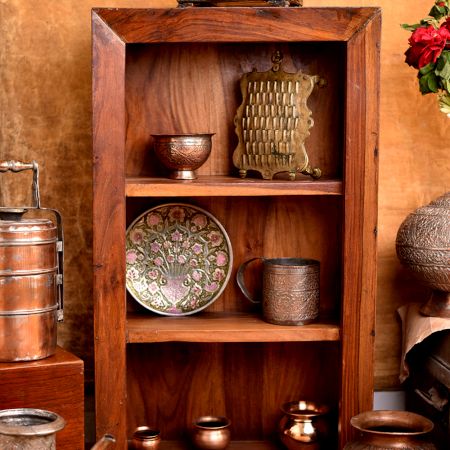
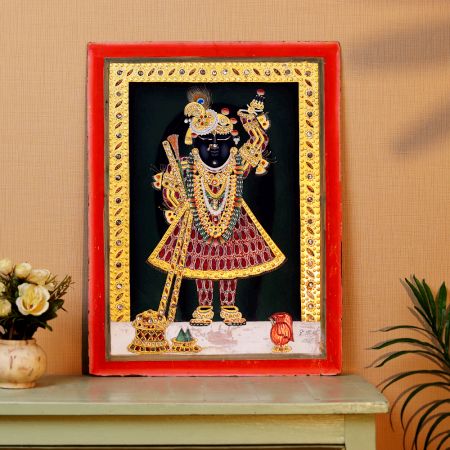
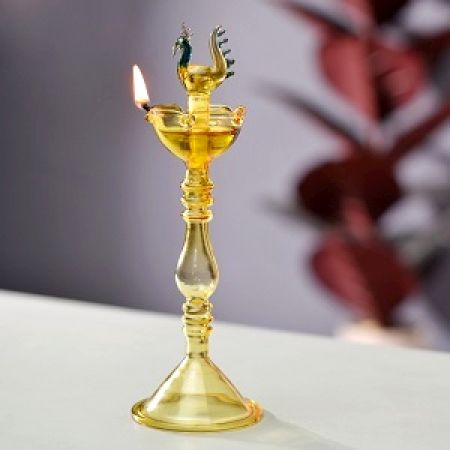



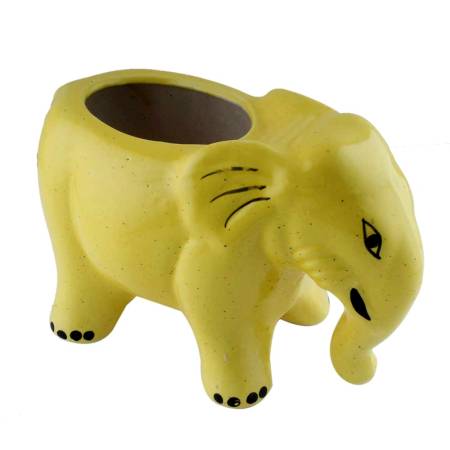
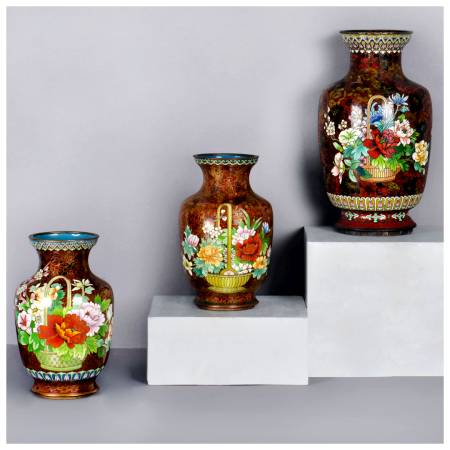
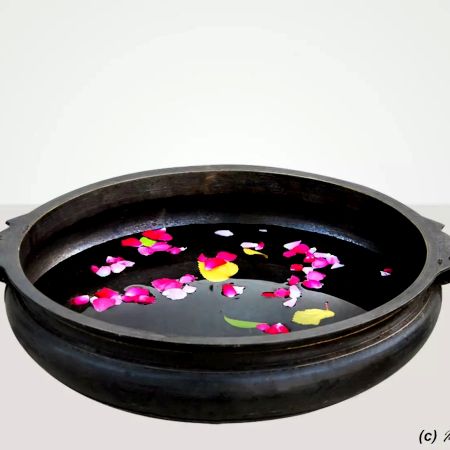

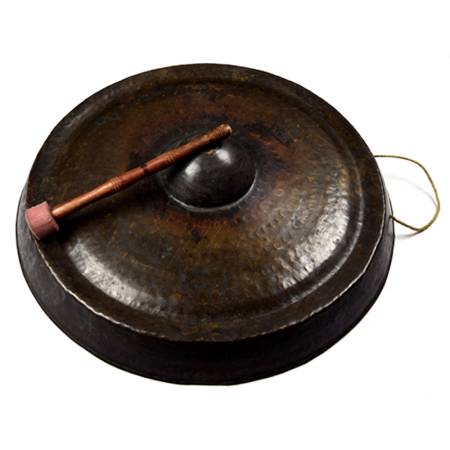







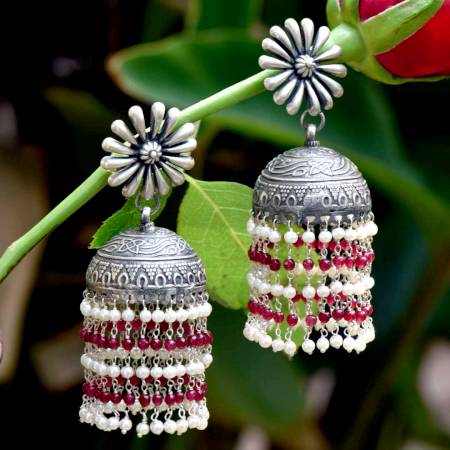
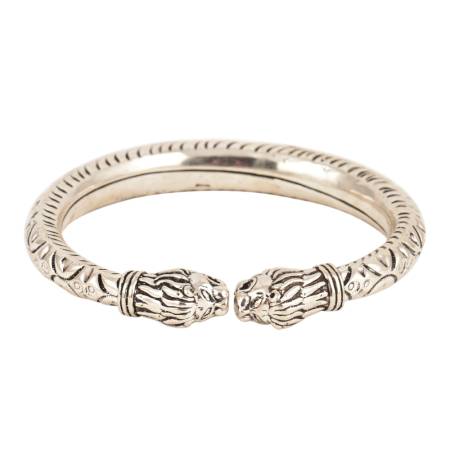
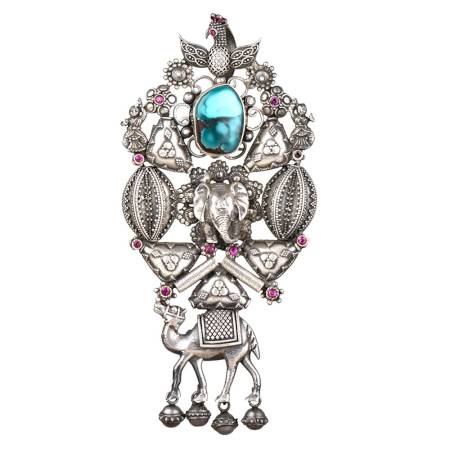








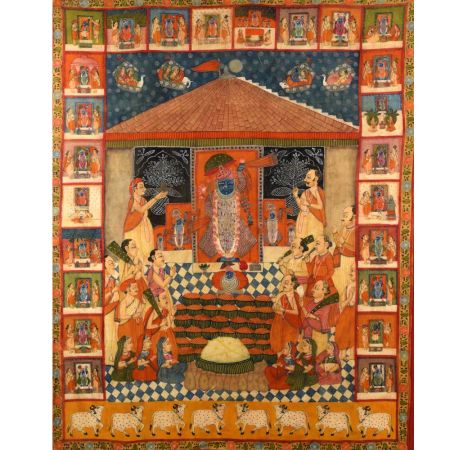
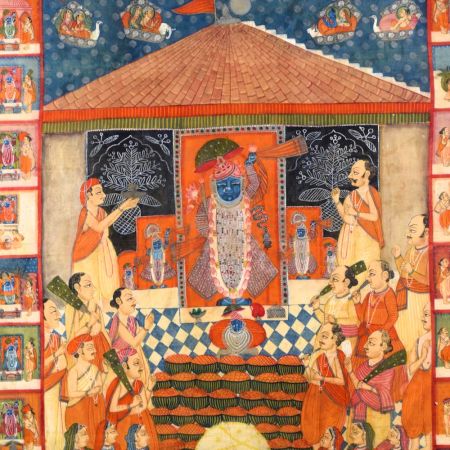

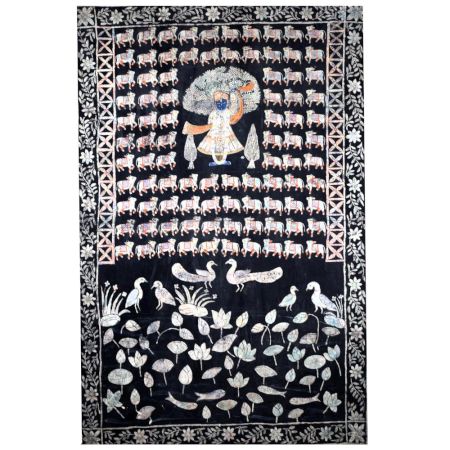
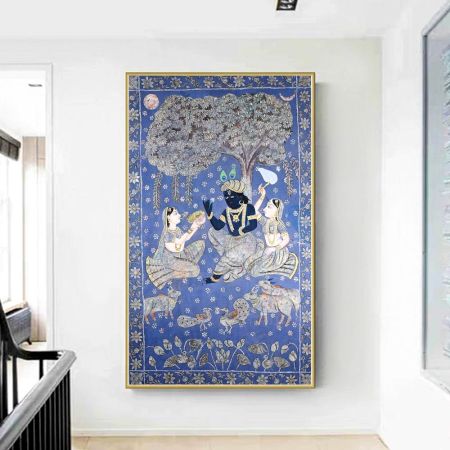

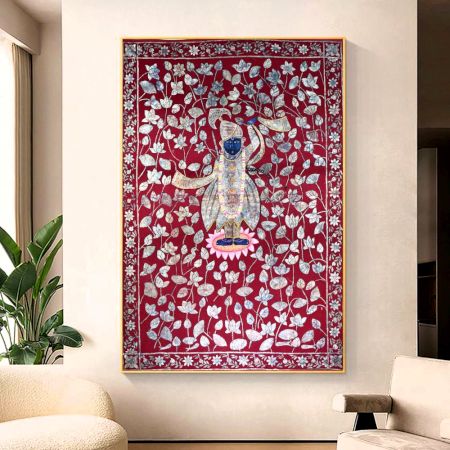
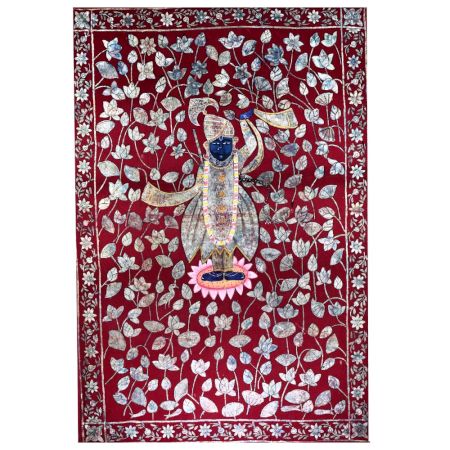
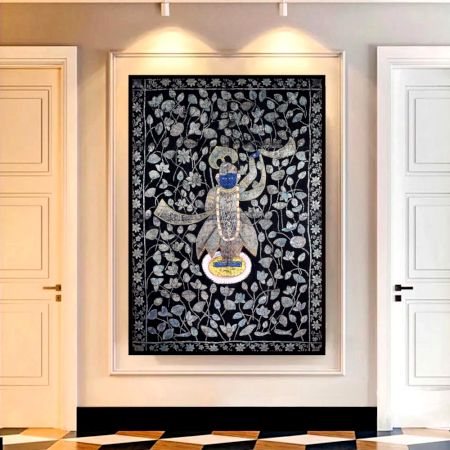

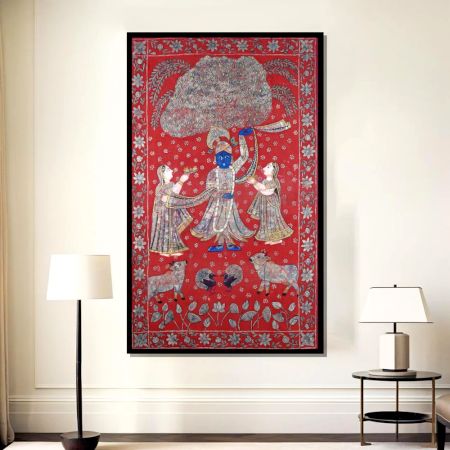
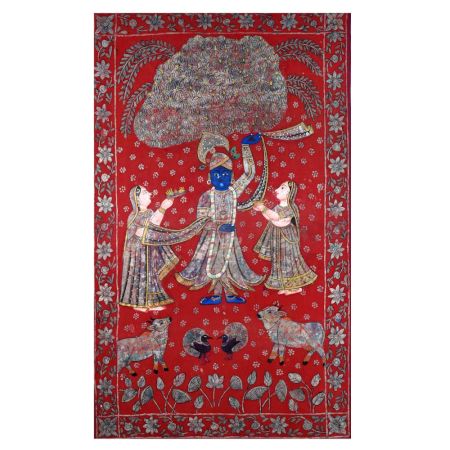
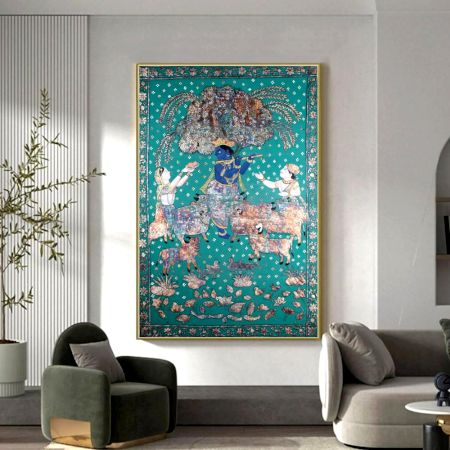

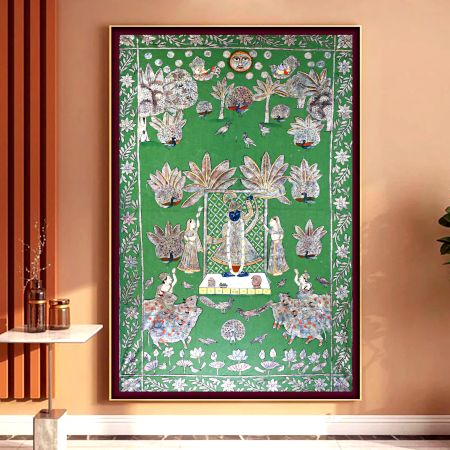
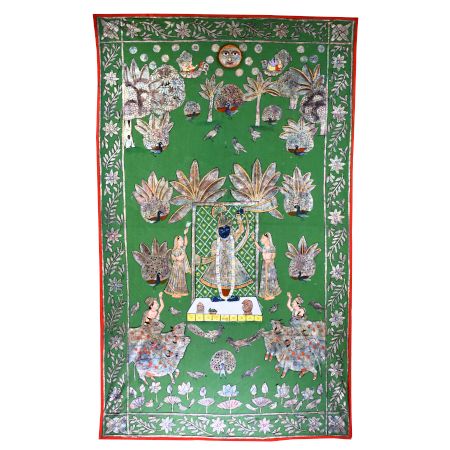
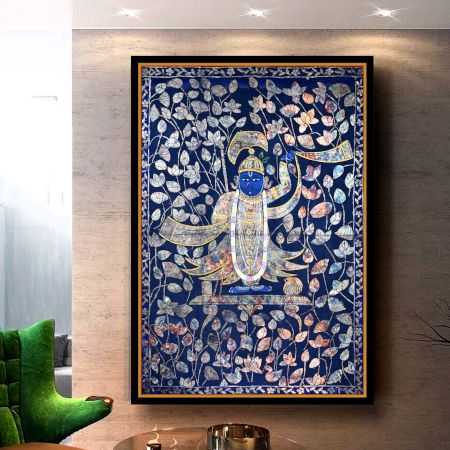

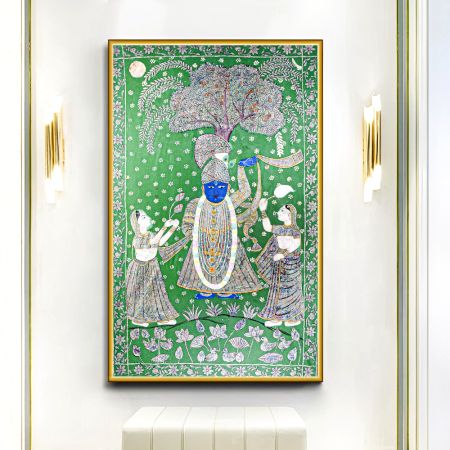

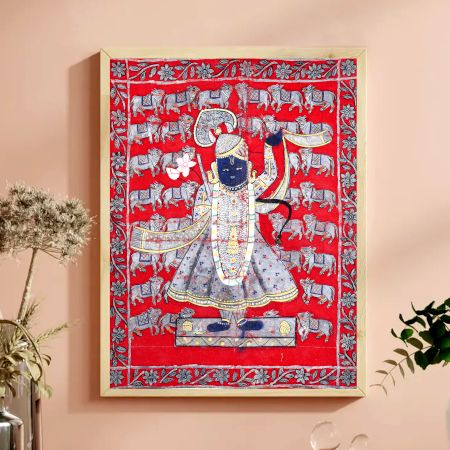
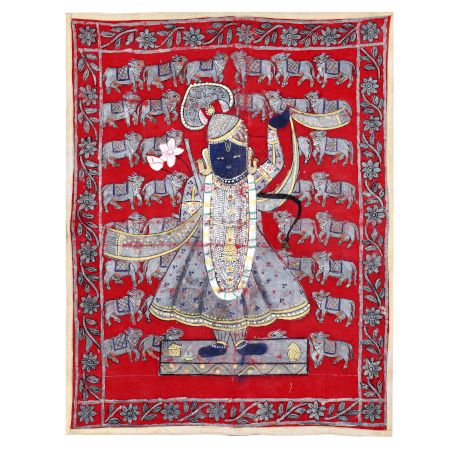




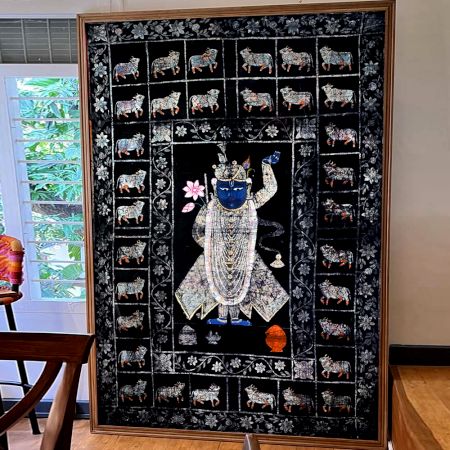

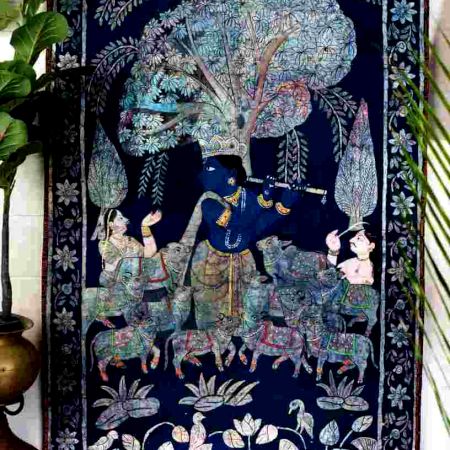


























































.JPG?ver=1.7)
.JPG?ver=1.7)
.JPG?ver=1.7)
.jpg?ver=1.7)






.JPG?ver=1.7)
.JPG?ver=1.7)
.jpg?ver=1.7)
.jpg?ver=1.7)




.JPG?ver=1.7)
.JPG?ver=1.7)
.JPG?ver=1.7)
.JPG?ver=1.7)
.JPG?ver=1.7)
.JPG?ver=1.7)










.JPG?ver=1.7)
.JPG?ver=1.7)
.JPG?ver=1.7)
.JPG?ver=1.7)
.JPG?ver=1.7)
.JPG?ver=1.7)
.JPG?ver=1.7)
.JPG?ver=1.7)
.JPG?ver=1.7)
.JPG?ver=1.7)
.JPG?ver=1.7)
.JPG?ver=1.7)
.JPG?ver=1.7)
.JPG?ver=1.7)
.JPG?ver=1.7)
.JPG?ver=1.7)
.JPG?ver=1.7)
.JPG?ver=1.7)
.JPG?ver=1.7)
.JPG?ver=1.7)
.JPG?ver=1.7)
.JPG?ver=1.7)
.JPG?ver=1.7)
.JPG?ver=1.7)
.JPG?ver=1.7)
.JPG?ver=1.7)
.JPG?ver=1.7)
.JPG?ver=1.7)
.JPG?ver=1.7)
.JPG?ver=1.7)
.JPG?ver=1.7)
.JPG?ver=1.7)
.JPG?ver=1.7)
.JPG?ver=1.7)
.JPG?ver=1.7)
.JPG?ver=1.7)
.JPG?ver=1.7)
.JPG?ver=1.7)
.JPG?ver=1.7)
.JPG?ver=1.7)
.JPG?ver=1.7)
.JPG?ver=1.7)
.JPG?ver=1.7)
.JPG?ver=1.7)
.JPG?ver=1.7)
.JPG?ver=1.7)
.JPG?ver=1.7)
.JPG?ver=1.7)
.JPG?ver=1.7)
.JPG?ver=1.7)































































